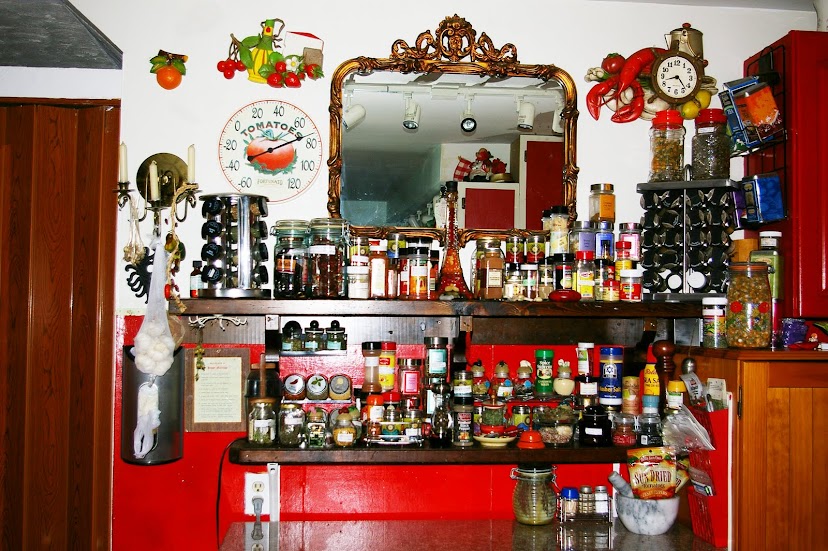Did you know About Cupuacu is a tree that grows in the rainforest canopy in South America with the Latin name Theobroma Grandiflorum? The Cupuaçu belongs to the cocoa family and grows to a height of 12-20 meters (30-65 feet). The fruit of the tree, which is called by the same name, has been a primary food source for natives in the rainforest for centuries and has a creamy, exotic pulp at the center of a large melon.
The fruits are about the size of a medium-sized watermelon and become ripe from January to April, during the rainy season. These are gathered, split open, and the pulp is made into juice, ice cream, jam, tarts, smoothies and more. These are considered delicacies in many of the larger cities of South America, such as Rio, and are sold in shops of all description.
Traditionally it has been cultivated and used by indigenous peoples for centuries. Nutritionally, Cupuacu is very compact and full. The ìbeansî (seeds) were often given to people to chew to cure abdominal pains and the juice would be blessed by shamans and given to pregnant women, newlyweds who wanted children, and others for various maladies.
Cupuacu came to the attention of many westerners when a Japanese company attempted to trademark the name of the tree and fruit as well as the term ìCupulateî to sell as a chocolate coffee-like drink. Brazil finally declared Cupuacu to be the national fruit and the name to be ineligible for trademark.
The Nutrients in Cupuacu
Alone amongst every plant known, Cupuacu fruit has phytonutrient polyphenols (theograndins). These have a myriad of nutritional benefits, which will be discussed more thoroughly below.
Cupuacu is also heavy with vitamins B1, B2, B3 (Niacin), fatty and amino acids, and at least nine antioxidants (including Vitamins A and C). Being from the cocoa family, Cupuacu also has a high flavanoid content.
There are many other ingredients in the nutritional content of these rainforest fruits as well, including calcium, selenium, and others.
Nutritional and Health Benefits of Cupuacu
There are many health benefits to Cupuacu, most of which are tied to the fruit's extremely potent phytonutrient polyphenols, anti-oxidants, essential nutrients, vitamins, and others mentioned earlier.
It's primary health benefit is stimulating the immune system while simultaneously supporting the body's ability to fight disease. Cupuacu has a caffeine-like effect, but does not contain caffeine. It is one of the few cocoa relatives that does not, yet it retains this energetic effect.
Most of the benefits of Cupuacu are synergistic. For instance, the energy-boosting effect mentioned comes primarily as a result of the fruit's heightening of the immune system, lowering of blood pressure, and the body-boosting effects of the fast-acting nutrients and vitamins from the fruit. Unlike most energy drinks or caffeine, however, there is no ìdownî with Cupuacu. No tired feeling afterwards.
Still more synergistic effects include healthier skin and hair, lowered cholesterol levels (through lipid peroxidation inhibition), and better libido. These are some of the better benefits of the Cupuacu fruit.
Another huge benefit of the fruit is its extremely rich array and concentration of antioxidants. These have a large number of longer-term effects on the body including (and possibly most importantly) the neutralization of free radicals in the body's tissues. The improved circulation and lowered blood pressure mentioned already aid in this process of eliminating those free radicals.
Others of these antioxidants are what help lower cholesterol levels, improve brain function, and more. Many of the essential vitamins and minerals are boosters for the gastro-intestinal system (explaining the fruit's use by natives for GI problems) as well as a healthier cardio-vascular system.
How Cupuacu Compares to Acai
There are two major differences between Cupuacu and Acai. Both of them are at the root of why Cupuacu is better than Acai in a side-by-side comparison.
First, Acai is a small berry that grows in clumps similar to grapes (though the individual berries are smaller). This means that Acai, when picked, begins to lose many of its vitamins and antioxidants over time. The longer the berry sits after picking, the less value it has when juiced or pulped. The other major disadvantage of a small berry is its relative susceptibility to the elements and natural forces.
Secondly, Acai is very well known and has had a plethora of hucksters and sellers spinning it into some kind of cure-all. This has given it a bad public name in some respects, has lent a large amount of industrialized growth (rainforest trees are destroyed to make way for the Acai), and has generated some less-than-organic methods for cultivation and processing.
Those two things are the major differences between Cupuacu and Acai, at least until nutritional content is considered. Scientists in Brazil have analyzed both fruits and have found that, pound for pound, fresh-picked Acai has less-concentrated antioxidants, vitamins, etc. than Cupuacu.
Since Cupuacu is a melon-type fruit with a relatively thick skin, it is not prone to nutritional loss when picked and keeps for a longer period after picking before succumbing to rot than Acai does. Cupuacu trees produce more fruit per tree (measured by weight) than Acai does, and these trees are already naturally indigenous rainforest specimens.
Because Cupuacu is relatively new outside of South America, it has not been exposed to the hucksterism that Acai has and most sources are natural and organic in nature.
Although the two are different in some ways, the two fruits are very often combined (successfully) into juice drinks for sale in North America.

No comments:
Post a Comment